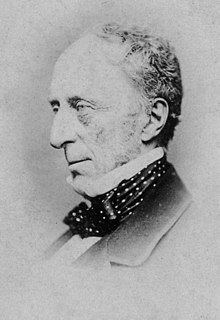Monarch Victoria Nationality British Spouse Mary Grey (m. 1829) Role Politician | Name Charles 1st Prime Minister Lord John Russell Political party Whig | |
 | ||
Children Charles Wood, 2nd Viscount Halifax Parents Anne, Francis Wood, 2nd Baronet Grandchildren Edward Frederick Lindley Wood, 1st Earl of Halifax | ||
Charles Wood, 1st Viscount Halifax, GCB, PC (20 December 1800 – 8 August 1885), known as Sir Charles Wood, 3rd Bt between 1846 and 1866, was a British Whig politician and Member of Parliament. He served as Chancellor of the Exchequer from 1846 to 1852.
Contents
Background
Halifax was the son of Sir Francis Wood, 2nd Baronet, and his wife Anne, daughter of Samuel Buck. He was educated at Eton and Oriel College, Oxford, where he studied classics and mathematics.
Political career
A Liberal and Member of Parliament from 1826 to 1866, Wood served as Chancellor of the Exchequer in Lord John Russell's government (1846 –1852), where he opposed any further help for Ireland during the Great Famine there. The extreme parsimony of the British Government towards Ireland while Wood was in charge of the Treasury greatly enhanced the suffering of those affected by famine. Wood believed in the economic policy of Laissez-faire and preferred to leave the Irish to starve rather than 'undermine the market' by allowing in cheap imported grain. In his 1851 budget, Sir Charles liberalized trade, reducing import duties and encouraging consumer goods. Disraeli, a former protectionist, would after Peel's death transform the party into a complex party machine that embraced free trade. In a speech on an interim financial statement on 30 April 1852, Disraeli referred to Wood's influence on economic policy, setting a trend for the way budgets are presented in the Commons. Tariff reduction led to a noticeable increase in consumption: the Conservatives moved from Derby-Bentinck protectionism towards a new politics during 1852. For Wood, a dry old stick, Disraeli was 'petulant and sarcastic', qualities he disliked.
Wood later served as President of the Board of Control under Lord Aberdeen (1852–1855), as First Lord of the Admiralty in Lord Palmerston's first administration (1855–1858), and as Secretary of State for India in Palmerston's second government (1859–1866). He succeeded to his father's baronetcy in 1846, and in 1866 he was elevated to the peerage as Viscount Halifax, of Monk Bretton in the West Riding of the County of York. After the unexpected death of Lord Clarendon necessitated a reshuffle of Gladstone's first cabinet, Halifax was brought in as Lord Privy Seal, serving from 1870 to 1874, his last public office.
Wood's despatch
As the President of the Board of Control, Wood took a major step in spreading education in India when in 1854 he sent a despatch to Lord Dalhousie, the then Governor-General of India. It was recommended therein that:
- An education department was to be set in every province.
- Universities on the model of the London university be established in big cities such as Bombay, Calcutta and Madras.
- At least one government school be opened in every district.
- Affiliated private schools should be given grant in aid.
- The Indian natives should be given training in their mother tongue also.
In accordance with Wood's despatch, Education Departments were established in every province and universities were opened at Calcutta, Bombay, and Madras in 1857, in Punjab in 1882, and at Allahbad in 1887.
Family
Lord Halifax married Lady Mary Grey (3 May 1807 – 6 July 1884), fifth daughter of Charles Grey, 2nd Earl Grey, on 29 July 1829. They had four sons and three daughters:
Lady Halifax died in 1884. Lord Halifax survived her by just over a year and died in August 1885, aged 84. He was succeeded in his titles by his eldest son Charles, who was the father of Edward Wood, 1st Earl of Halifax.
